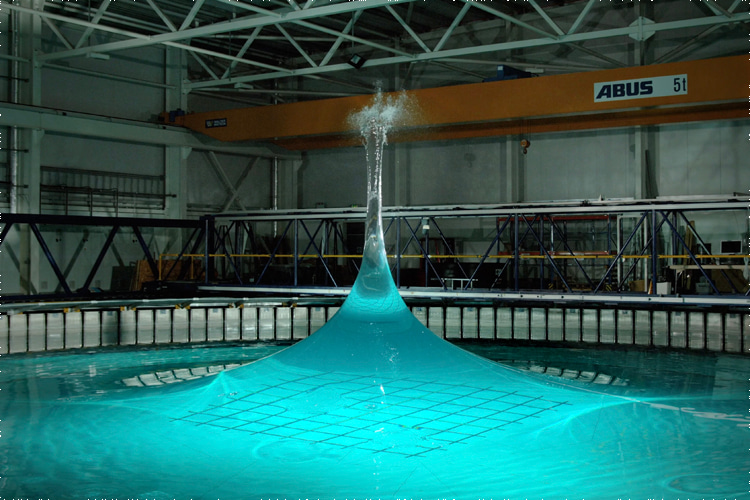Science has dissected and simulated natural events and phenomena for centuries. Waves are one of them.
In physics, there are two main types of waves.
Electromagnetic waves refer to all sorts of radio waves, visible light, infrared radiation, X-rays, ultraviolet radiation, and gamma rays.
Mechanical waves include seismic waves, gravity waves, surface waves, string vibrations, and sound.
Dutch mathematician and physicist Christiaan Huygens (1629-1695) unveiled his first mathematical model for the wave theory of light in 1678.
Huygens would publish his findings in his "Traité de la Lumière" ("Treatise on Light") in 1690.
Since the 17th century, much water has flowed under the bridge.
Decades of cumulative research, experimentation, trial and error led us to an evolutionary stage where we can mimic the behavior of Planet Earth's largest surface: the ocean.
Moreover, we can actually create waves in controlled environments for sports purposes, which is the case of wave pools.
For that, all roads lead to Rome. In other words, several different technologies are able to generate artificial - or human-made - waves.
But there's more to waves, ripples, and swells than leisure and surfing.
The so-called wave tanks serve multiple helpful and useful purposes with a much broader impact on our lives.
The Ultimate Ocean Simulator
So, what is a wave tank, and what are they used for?
A wave tank is a laboratory setup or facility used to study surface waves in water.
It usually features a water-filled box or container equipped with paddles or actuators around below or at one end to generate ocean-like waves and a wave-absorbing surface at the other end to minimize reflections.
Around the basin, a team of scientists monitors data collected by sensors previously deployed in the water.
The wave tank is designed to simulate real custom sea states and ocean conditions and study wave behavior.
The conclusions scientists reach after observing the water movements have hundreds of daily life applications, from wave forecasting and shipping to coastal protection and energy generation.
The world's largest and most advanced wave tanks are part of university campuses but provide services and knowledge to companies and third-party entities.
Here are a few examples:
- Hydraulics Wave Basin Facility (University of Iowa);
- MTU WAVE (Michigan Technological University);
- Chapman Hall Wave Tank (University of North Carolina at Chapel Hill);
- Ohmsett (Leonardo, New Jersey);
- National Renewable Energy Laboratory (NREL) Wave Tank (Sea Wave Environmental Lab);
- Deltares Delta Flume (Deltares Research Institute);
- Aalto Ice and Wave Tank (Aalto University);
- Large Wave Flume (Leibniz University Hannover and Technische Universität Braunschweig);
- Coastal, Ocean and Sediment Transport (COAST) Laboratory (University of Plymouth);
- FloWave (University of Edinburgh);
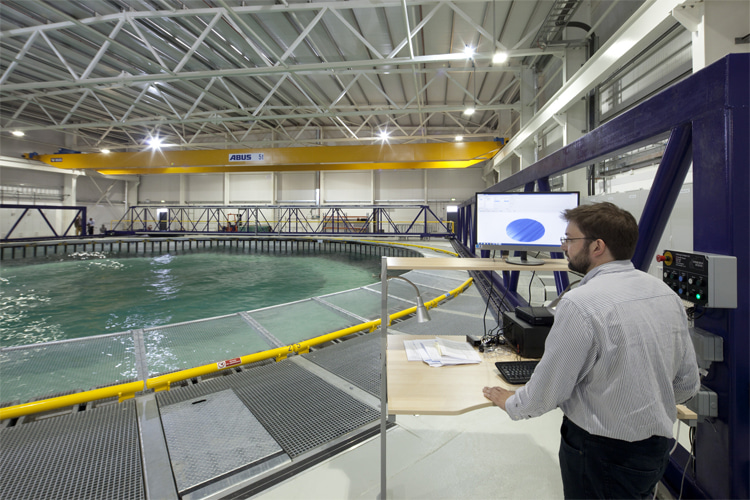
FloWave: a One-of-a-Kind Wave Tank
Wave tanks have been around for quite a while and are not all the same.
Size matters, and the array of technology installed can make a difference and widen the spectrum of tests and analyses that might undertaken.
New generation units are getting increasingly powerful regarding the number of variables they can combine and process to get valuable information.
One of the world's state-of-the-art wave tanks is the FloWave Ocean Energy Research Facility, located at The University of Edinburgh's King's Buildings Campus in Scotland.
FloWave is a specialized testing facility designed to help develop and improve ocean energy technologies, such as devices that generate electricity from waves and currents.
The spectacularly large, round tank is 82 feet (25 meters) wide and 6.5 feet (2 meters) deep and is able to generate and simulate realistic marine conditions and behaviors, for instance, in coastal waters.
The Scottish oceanographic workshop produces waves from different directions, with varying sizes and frequencies.
Its circular design, filled with 2.4 million liters of water, is the only of its kind with 360-degree symmetry wave generation for studying multi-directional ripples interacting with currents coming from any direction.
The mechanisms that push and pull water are called "wave makers." FloWave features 168 of them equally distributed around the basin.
The currents are produced by 28 flow-drive units controlling 1.7-meter impellers that independently drive flow anywhere at speeds of up to 1.6 meters per second.
FloWave's 1/20 scale model covers nearly all demand and offers faster and more data-intensive testing compared to other facilities.
For instance, it's a great tool to assess and fine-tune the viability of marine energy technologies before full-scale deployment.
The facility is also equipped with modern equipment like 3D printers and computer-controlled machines for quick and efficient development and adjustment of prototypes.
A wave pool technology for a specific site and bathymetry could very well be born or proof-tested here.
Alternatively, it could be used to check whether a new-generation ocean buoy can withstand harsh North Atlantic weather conditions.
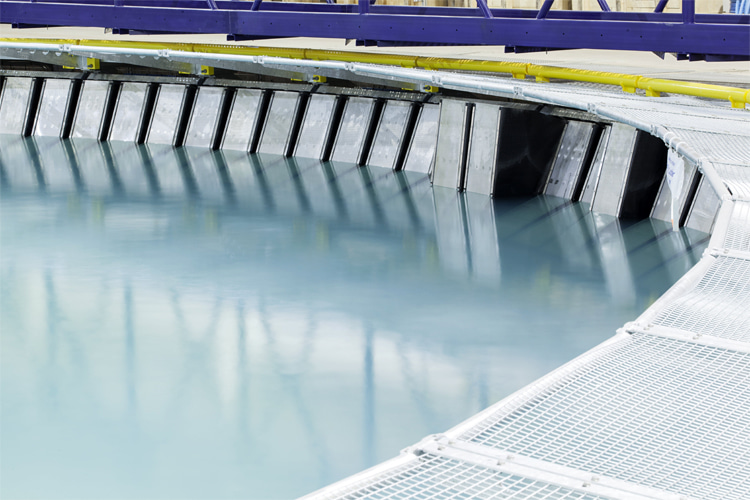
The Scottish Green Energy Tradition
The construction of the FloWave Ocean Energy Research Facility at The University of Edinburgh is not a coincidence, though.
The country has a rich tradition of renewable energy innovation and has been leading the transition to green sources, with 97.4 percent of its electricity being generated sustainably by 2020.
Scotland has great weather conditions for harnessing power from wind, tides, and waves.
It is home to the world's most powerful tidal turbine - Orbital Marine Power's O2.
The role and legacy of the University of Edinburgh have been fundamental in this global transition to green energy.
In 1974, Professor Stephen Salter developed the "Edinburgh Duck," the world's first true wave energy converter.
His key contribution opened the way to future advanced marine energy technology and equipment.
By 2003, a smaller curved-edge tank for smaller-scale projects served as a precursor to FloWave.
Ten years later, in 2013, and after an investment of £12 million, the first-ever large circular tank with 360-degree control over waves and currents was born.
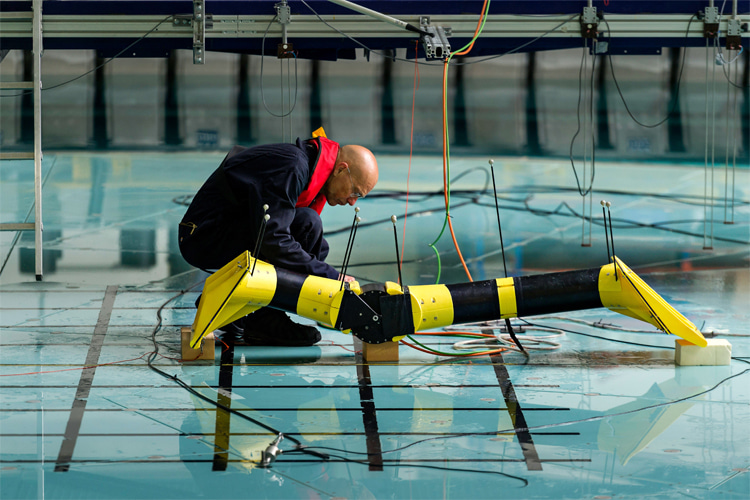
High-Tech Data Collection
FloWave is actually more impressive for the sophisticated data acquisition system that we may not spot at first sight.
Our eyes are normally immediately driven toward the water tank itself and less toward the high-tech gear and equipment below, around, and above it.
They include:
- Cameras: 4K HD video cameras, underwater cameras, and a six-degree-of-freedom Qualisys motion capture system around the tank perimeter and underwater;
- Water Measurement Gear: Wave gauges that measure with sub-millimeter accuracy, 128Hz wave gauges for precise wave tracking, and electromagnetic flow meters to monitor currents. The Vectrino acoustic Doppler current meter also measures water velocity, offering insights into how water flows affect models;
- General Measurement Tools: Various load cells for measuring forces acting on models, accelerometers, and gyrometers. A six-degree-of-freedom load cell on the tank's floor helps capture forces acting on the models, and synchronized data acquisition (DAQ) systems ensure all measurements are integrated smoothly;
And then there's the gantry.
The moveable platform positioned about a meter above the tank's surface provides easy access to the models and equipment in the giant water basin.
It can be repositioned as needed and serves as a hub for data collection, especially through wave gauges attached to it.
Therefore, researchers can easily work on models and adjust instruments without draining the tank.
The on-site workshop features other advanced tools, such as a 3D printer, to create precise, strong models for testing.
There are also computer numerical control (CNC) milling and turning machines to help build custom parts for prototypes, as well as power tools for more straightforward adjustments and repairs.
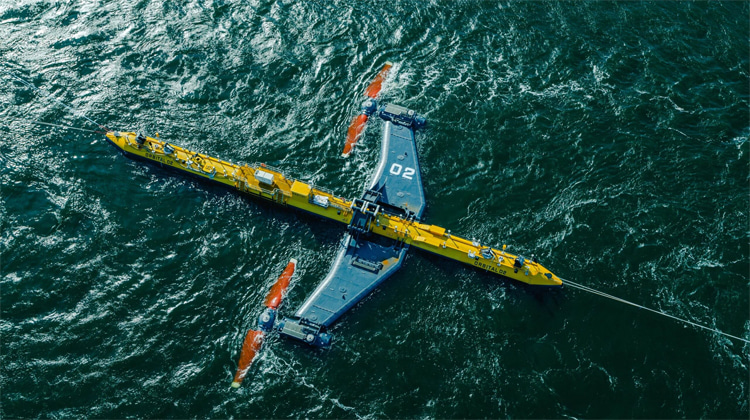
State-of-the-Art Projects
As we've seen, FloWave covers multiple working fields in renewable energy, particularly wave, tidal, offshore wind, and ocean technology.
Since 2014, the facility has been involved in cutting-edge testing for national and international public and private entities, consortiums, and organizations.
The projects include:
- Wave energy converters (Mocean Energy);
- Advanced prototyping and interfacing for wave energy control (HAPiWEC);
- Rogue waves and cross seas wave mechanics research (WBICS);
- O2 tidal turbine (Orbital Marine Power);
- Tidal turbine failure research (RealTide);
- Tidal turbine arrays research (UKCMER SuperGen and UKCMER SuperGen);
- Offshore wind turbine design testing;
- Floating wind energy testing (W2Power);
- Floating wind turbines and hydrodynamics doctoral projects (IDCORE);
- Robotic systems and sensors for offshore energy stations (ORCA Hub);
- Acoustic tomography mapping;
The world's first circular combined wave and current simulation tank is definitely worth a visit.
Check out FloWave's available open days and get acquainted with the most sophisticated technologies in marine science and wave forecasting.
Words by Luís MP | Founder of SurferToday.com
